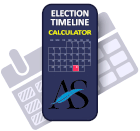On  The Board? If you are on the board and your association needs help with legal issues, contact us for a proposal--we are friendly and our rates are competitive. With ten offices throughout California, we counsel boards on how best to address problems. Watch our video.
The Board? If you are on the board and your association needs help with legal issues, contact us for a proposal--we are friendly and our rates are competitive. With ten offices throughout California, we counsel boards on how best to address problems. Watch our video.
2-Minute Videos. Visit our library of animated 2-MINUTE VIDEOS. They provide an easy introduction to subjects such as adopting rules, preparing budgets, worker's compensation, governing documents, borrowing from reserves, fiduciary duties, conflicts of interest, and much more.
Visit our library of animated 2-MINUTE VIDEOS. They provide an easy introduction to subjects such as adopting rules, preparing budgets, worker's compensation, governing documents, borrowing from reserves, fiduciary duties, conflicts of interest, and much more.
Use  our Election Timeline Calculator for scheduling elections with dates and instructions for each key point in the election cycle. You can find additional election information and procedures in our Election Menu.
our Election Timeline Calculator for scheduling elections with dates and instructions for each key point in the election cycle. You can find additional election information and procedures in our Election Menu.
 ADAMS|STIRLING is the home of super lawyers and rising stars in community association law. We provide legal services to community and commercial associations in the following counties: Los Angeles, Orange, San Diego, Riverside, San Bernardino, Santa Clara, Alameda, Sacramento, Contra Costa, Fresno, Ventura, San Francisco, Kern County, San Mateo, San Joaquin, Stanislaus, Sonoma, Tulare, Solano, Monterey, Santa Barbara, Placer, San Luis Obispo, Santa Cruz, Merced, Marin, Butte, Yolo, El Dorado, Shasta, Imperial, Kings, Madera, Napa, Humboldt, Nevada, Sutter, Mendocino, Yuba, Lake, Tehama, Tuolumne, San Benito, Calaveras, Siskiyou, Amador, Lassen, Del Norte, Glenn, Plumas, Colusa, Mariposa, Inyo, Trinity, Mono, Modoc, Sierra, and Alpine.
ADAMS|STIRLING is the home of super lawyers and rising stars in community association law. We provide legal services to community and commercial associations in the following counties: Los Angeles, Orange, San Diego, Riverside, San Bernardino, Santa Clara, Alameda, Sacramento, Contra Costa, Fresno, Ventura, San Francisco, Kern County, San Mateo, San Joaquin, Stanislaus, Sonoma, Tulare, Solano, Monterey, Santa Barbara, Placer, San Luis Obispo, Santa Cruz, Merced, Marin, Butte, Yolo, El Dorado, Shasta, Imperial, Kings, Madera, Napa, Humboldt, Nevada, Sutter, Mendocino, Yuba, Lake, Tehama, Tuolumne, San Benito, Calaveras, Siskiyou, Amador, Lassen, Del Norte, Glenn, Plumas, Colusa, Mariposa, Inyo, Trinity, Mono, Modoc, Sierra, and Alpine.